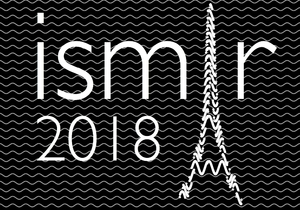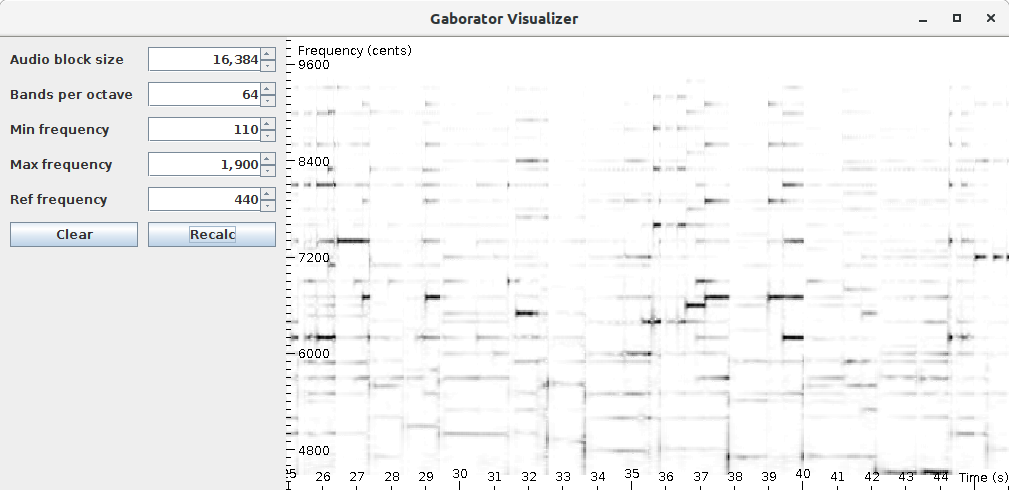» By Joren on Monday 24 September 2018
 Thanks to the support of a travel grant by the faculty of Arts and Philosophy of Ghent University I was able to attend the ISMIR 2018 conference. A conference on Music Information Retrieval. I am co author on a contribution for the the Late-Breaking / Demos session
Thanks to the support of a travel grant by the faculty of Arts and Philosophy of Ghent University I was able to attend the ISMIR 2018 conference. A conference on Music Information Retrieval. I am co author on a contribution for the the Late-Breaking / Demos session
The structure of musical scales has been proposed to reflect universal acoustic principles based on simple integer ratios. However, some studying tuning in small samples of non-Western cultures have argued that such ratios are not universal but specific to Western music. To address this debate, we applied an algorithm that could automatically analyze and cross-culturally compare scale tunings to a global sample of 50 music recordings, including both instrumental and vocal pieces. Although we found great cross-cultural diversity in most scale degrees, these preliminary results also suggest a strong tendency to include the simplest possible integer ratio within the octave (perfect fifth, 3:2 ratio, \~700 cents) in both Western and non-Western cultures. This suggests that cultural diversity in musical scales is not without limit, but is constrained by universal psycho-acoustic principles that may shed light on the evolution of human music.
 IPEM, Research papers, Presentation, Music Information Retrieval, ISMIR, and UGent
IPEM, Research papers, Presentation, Music Information Retrieval, ISMIR, and UGent
 ismir_2018_logo.jpg, animated_logo.gif, and musical_scales_extended_abstract__0826_revision_copy.pdf
ismir_2018_logo.jpg, animated_logo.gif, and musical_scales_extended_abstract__0826_revision_copy.pdf
» By Joren on Thursday 13 September 2018
Recently I have published a small library on github called JGaborator. The library calculates fine grained constant-Q spectral representations of audio signals quickly from Java. The calculation of a Gabor transform is done by a C library named Gaborator. A Java native interface (JNI) bridge to the C Gaborator is provided. A combination of Gaborator and a fast FFT library (such as pfft) allows fine grained constant-Q transforms at a rate of about 200 times real-time on moderate hardware. It can serve as a front-end for several audio processing or MIR applications.
For more information on the Gaborator C library by Andreas Gustafsson, please see the gaborator.com website or a talk by the author on the library called Exploring time-frequency space with the Gaborator
While the gaborator allows reversible transforms, only a forward transform (from time domain to the spectral domain) is currently supported from Java.A spectral visualization tool for sprectral information is part of this package. See below for a screenshot:

 UGent and Code
UGent and Code
» By Joren on Wednesday 12 September 2018
 As an extension of the ISMIR conferences the International Society for Music Information Retrievel started a new journal: TISMIR. The first issue contains an article of mine:\
A Case for Reproducibility in MIR: Replication of ‘A Highly Robust Audio Fingerprinting System’. The abstract can be read here:
As an extension of the ISMIR conferences the International Society for Music Information Retrievel started a new journal: TISMIR. The first issue contains an article of mine:\
A Case for Reproducibility in MIR: Replication of ‘A Highly Robust Audio Fingerprinting System’. The abstract can be read here:
Claims made in many Music Information Retrieval (MIR) publications are hard to verify due to the fact that (i) often only a textual description is made available and code remains unpublished – leaving many implementation issues uncovered; (ii) copyrights on music limit the sharing of datasets; and (iii) incentives to put effort into reproducible research – publishing and documenting code and specifics on data – is lacking. In this article the problems around reproducibility are illustrated by replicating an MIR work. The system and evaluation described in ‘A Highly Robust Audio Fingerprinting System’ is replicated as closely as possible. The replication is done with several goals in mind: to describe difficulties in replicating the work and subsequently reflect on guidelines around reproducible research. Added contributions are the verification of the reported work, a publicly available implementation and an evaluation method that is reproducible.
 UGent, Research papers, Music Information Retrieval, and ISMIR
UGent, Research papers, Music Information Retrieval, and ISMIR
 Thanks to the support of a travel grant by the faculty of Arts and Philosophy of Ghent University I was able to attend the ISMIR 2018 conference. A conference on Music Information Retrieval. I am co author on a contribution for the the Late-Breaking / Demos session
Thanks to the support of a travel grant by the faculty of Arts and Philosophy of Ghent University I was able to attend the ISMIR 2018 conference. A conference on Music Information Retrieval. I am co author on a contribution for the the Late-Breaking / Demos session

 As an extension of the ISMIR conferences the International Society for Music Information Retrievel started a new journal: TISMIR. The first issue contains an article of mine:\
As an extension of the ISMIR conferences the International Society for Music Information Retrievel started a new journal: TISMIR. The first issue contains an article of mine:\